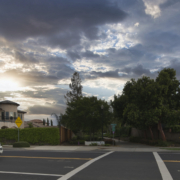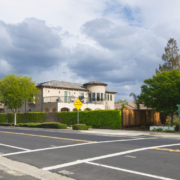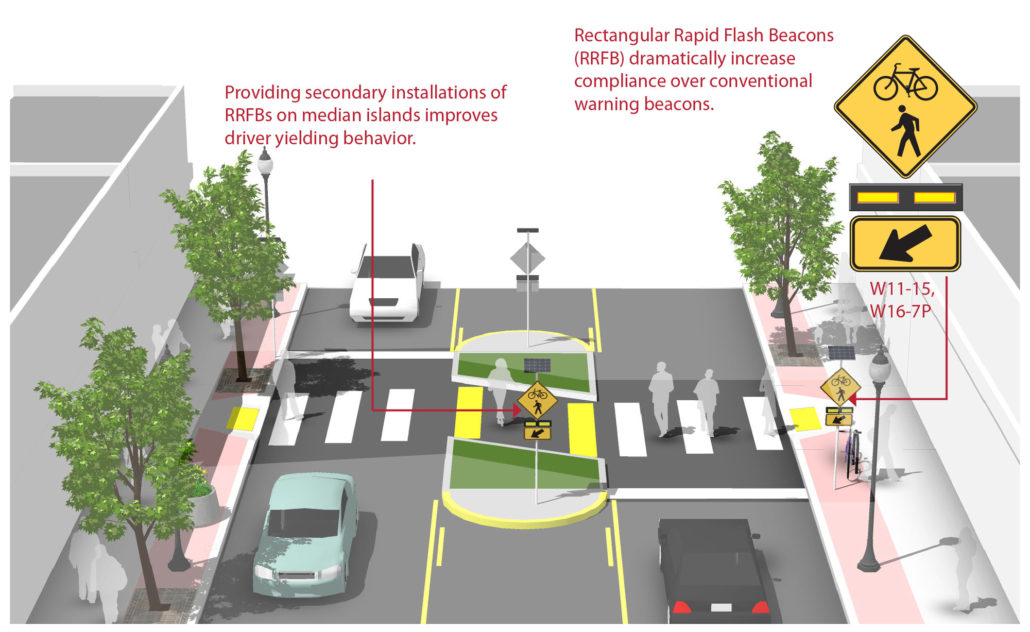
Image source: https://www.pexels.com/photo/landscape-photograph-of-skies-912364/
How much do you know about the power of solar RRFB systems?
In today’s blog, the team here at Availed Technologies outline common FAQs surrounding solar-powered RRFB systems: namely what the common array-to-load (ALR) variables are and what to keep in mind when maximizing power consumption.
Firstly, What Makes the ALR so Crucial?
The fundamentals for ensuring that the power of solar RRFB systems will be reliable year-round hinge on having a system where, on a daily basis, the power generated is greater than the power consumed. In the solar field this is known as the array-to-load ratio, or ALR.
Many of the variables for determining the ALR are intuitive, while others are less so. The following variables are considered the most common:
Time of Year, Latitude, and Historical Weather
A given system will have a much greater ALR installed in the sun-belt than in the Pacific Northwest. Time of year, latitude, and historical weather are all variables that are captured in solar insolation data available from NREL (the National Renewable Energy Laboratory.)
Industry best practices are to ensure the ALR of a system is a minimum of 1.2:1. To calculate this, the solar insolation value (measured as equivalent sun hours) for the month that has the lowest solar insolation for the year (typically December) is used.
Trees and Buildings
One often overlooked variable is shading from trees and buildings. Google’s Street View provides an excellent tool for determining the shade derating of a particular location, and it is important that this is factored into the calculation.
Why? Because more shade, of course, equals less daily power!
‘Under-the-Hood’ Variables
Also frequently overlooked are the ‘under-the-hood’ variables of solar RRFB systems themselves.
On the power generation side of the equation, this involves the solar panel and charging system that work together to deliver power to the batteries. Monocrystalline solar panels provide greater efficiency over polycrystalline solar panels; this difference is greatest during marginal charging conditions where, for an RRFB application, this is often when charging is most critical.
Similarly, Maximum Power Point Tracking (MPPT) charge controller technology provides greater efficiency over PWM (Pulse Width Modulation, particularly during lower light conditions where power generation can be so crucial.
The variables discussed so far are on the power generation side of the equation. On the power consumption side there are often very significant differences between different manufacturers’ systems and the technologies that are used.
Solar RRFB System Power Consumption
Before outlining the power consumption variables of solar RRFB systems, it should be noted that there are some inherent ‘buffers’ that make RRFBs particularly well-suited for solar power.
During the winter months where solar insolation is at its lowest, there is typically lower pedestrian activity… particularly during inclement weather. In addition, with shorter daylight hours comes more activations occurring in darkness when the system runs at a lower intensity, as dimming is required by the MUTCD for RRFBs and works to mitigate the disability glare that occurs if the light intensity is too bright.
Now, onto key solar RRFB system power consumption variables:
LED Efficiency
LED efficiency is a key variable in power consumption of an RRFB system. LEDs have been described as the ‘enabling technology’ for solar traffic devices and the gains seen throughout the years have been a game changer.
The landscape keeps changing and today there are ultra-efficient premium LEDs that, while cost-prohibitive for many applications, provide energy savings for devices like solar RRFBs that are significant.
The light intensity specification for RRFB LED indications is SAE J595 Class I which requires a relatively narrow beam pattern, much narrower than the ITE specification for LED Traffic Signal Modules. Compared to school zone flashers and 24-hour flashers that utilize these modules RRFBs require far less power which makes the device particularly well suited for solar power.
At the same time, in part due to the directional beam pattern combined with the irregular flash pattern, the RRFB is far more effective than traditional flashing beacons for a pedestrian activated warning system at uncontrolled crosswalks.
Wireless Technology
Another determining factor of power consumption is around the wireless technology used.
When one RRFB system is activated by the pedestrian push button all other systems commence activation simultaneously through being connected wirelessly. A wireless system designed for this specific application will consume a fraction of the power of a system designed for more general ITS applications.
Similarly, a controller that is designed specifically for the RRFB application will consume far less power than a controller designed for multiple applications. A well-designed controller will manage all the functions of the system with microchip level components on a single printed circuit board assembly. These functions include charging, powering the LEDs, field adjustments such as flash duration, and wireless connectivity between systems.
In short, an inefficient system can consume nearly four times the power compared to a highly efficient system. The Availed AV-400 RRFB, with a 20W solar panel and 14Ah battery capacity, will have a greater operating capacity than a less efficient system with a 60W solar panel and 50Ah battery capacity.
Energy Storage
Energy storage is the other key factor that needs to be considered and properly specified. The purpose of including batteries in an RRFB system is two fold: to enable operation during dark conditions when there is no charging, and to enable the system to operate through extreme weather conditions where over a 24 hour period the power generated could be less than the power consumed (ie when the ALR ratio is less than 1).
Consider a scenario when there are heavy overcast skies day after day in the winter time when daylight is already greatly reduced. In these conditions, charging will still occur with systems that have efficient charging technology, however the system could run an energy deficit where more power is consumed than generated during a 24 hour period. Sufficient battery capacity will ensure that the system will continue to operate throughout these conditions.
Industry best practices are for a system to have an autonomy of 5-to-10 days. A system with a high ALR will maintain reliable operation even with a lower autonomy due to the system’s ability to maintain charging in challenging conditions.
Start Utilizing the Power of Solar RRFB Systems Today
Given the multitude of variables involved in both the power generation and power consumption, the best way to evaluate an RRFB is with a Solar Performance Report that provides the array-to-load (ALR) and autonomy calculations.
Need help getting started harnessing the power of solar RRFB systems? Reach out to Availed Technologies today.






